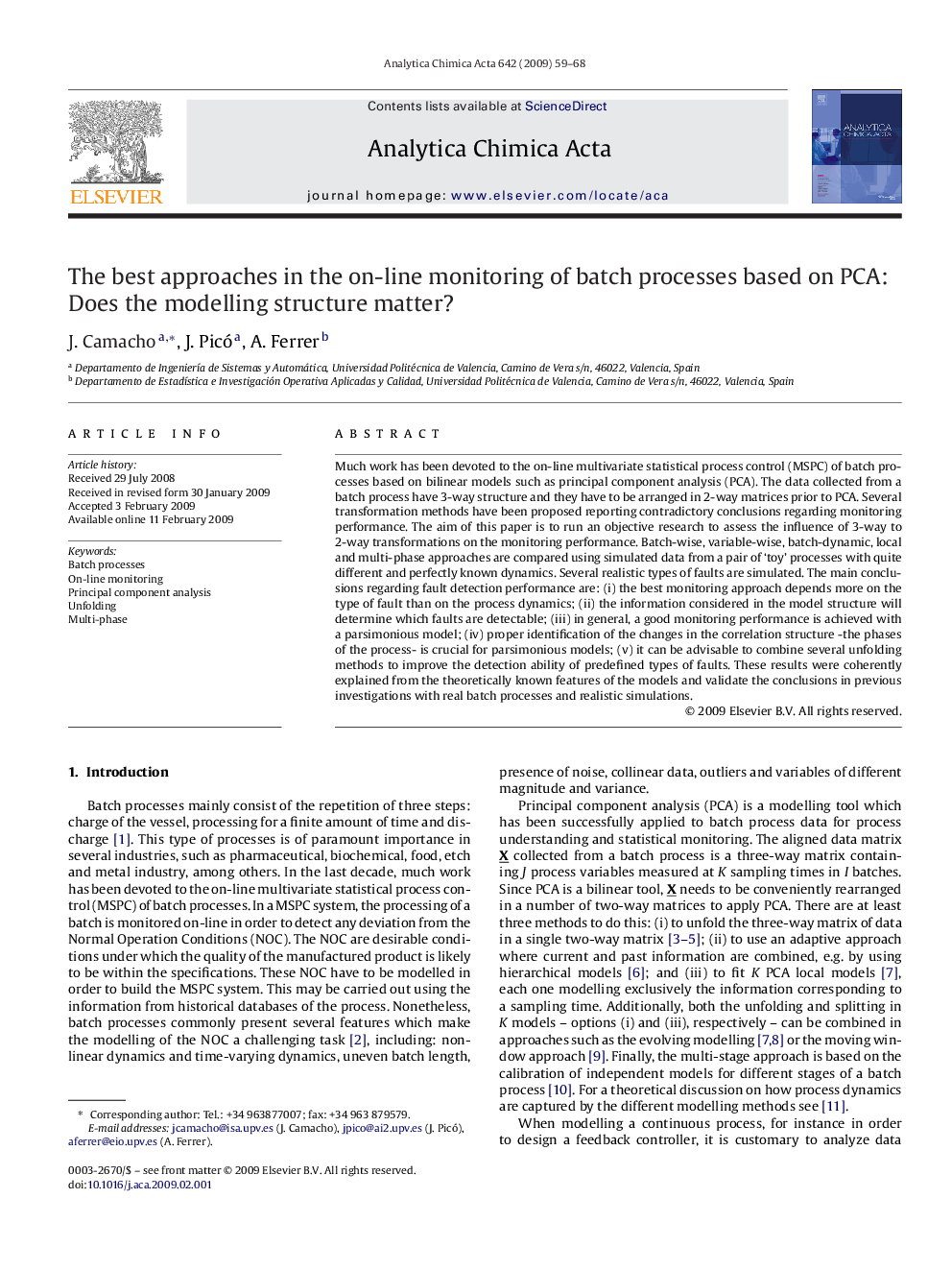| Article ID | Journal | Published Year | Pages | File Type |
|---|---|---|---|---|
| 1168809 | Analytica Chimica Acta | 2009 | 10 Pages |
Abstract
Much work has been devoted to the on-line multivariate statistical process control (MSPC) of batch processes based on bilinear models such as principal component analysis (PCA). The data collected from a batch process have 3-way structure and they have to be arranged in 2-way matrices prior to PCA. Several transformation methods have been proposed reporting contradictory conclusions regarding monitoring performance. The aim of this paper is to run an objective research to assess the influence of 3-way to 2-way transformations on the monitoring performance. Batch-wise, variable-wise, batch-dynamic, local and multi-phase approaches are compared using simulated data from a pair of 'toy' processes with quite different and perfectly known dynamics. Several realistic types of faults are simulated. The main conclusions regarding fault detection performance are: (i) the best monitoring approach depends more on the type of fault than on the process dynamics; (ii) the information considered in the model structure will determine which faults are detectable; (iii) in general, a good monitoring performance is achieved with a parsimonious model; (iv) proper identification of the changes in the correlation structure -the phases of the process- is crucial for parsimonious models; (v) it can be advisable to combine several unfolding methods to improve the detection ability of predefined types of faults. These results were coherently explained from the theoretically known features of the models and validate the conclusions in previous investigations with real batch processes and realistic simulations.
Related Topics
Physical Sciences and Engineering
Chemistry
Analytical Chemistry
Authors
J. Camacho, J. Picó, A. Ferrer,
